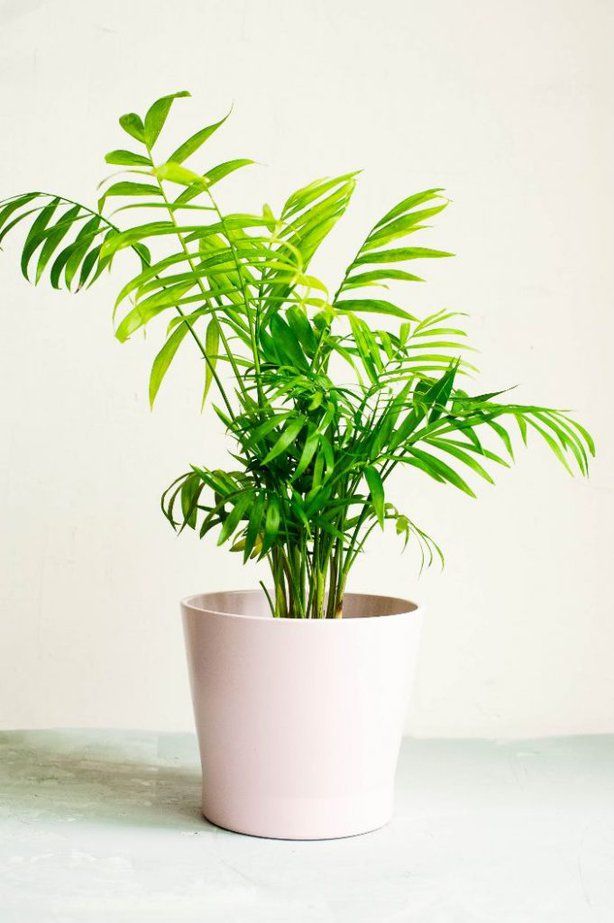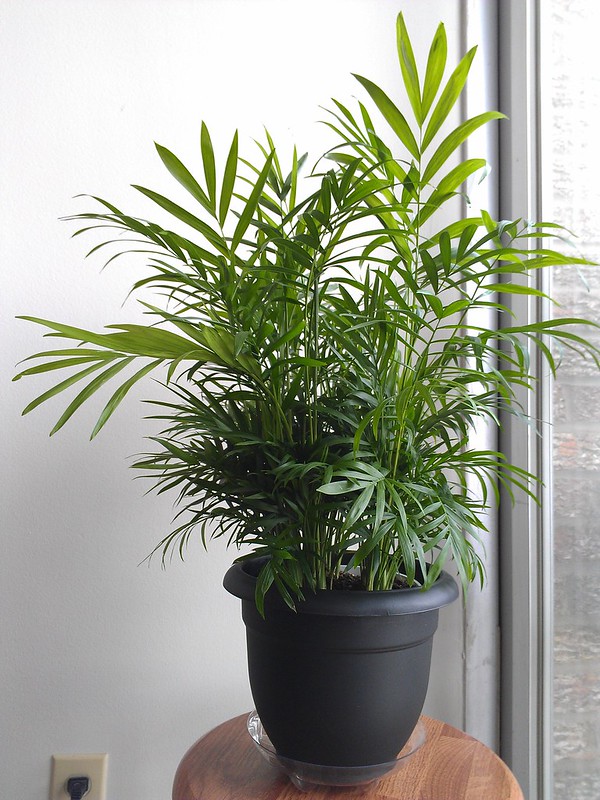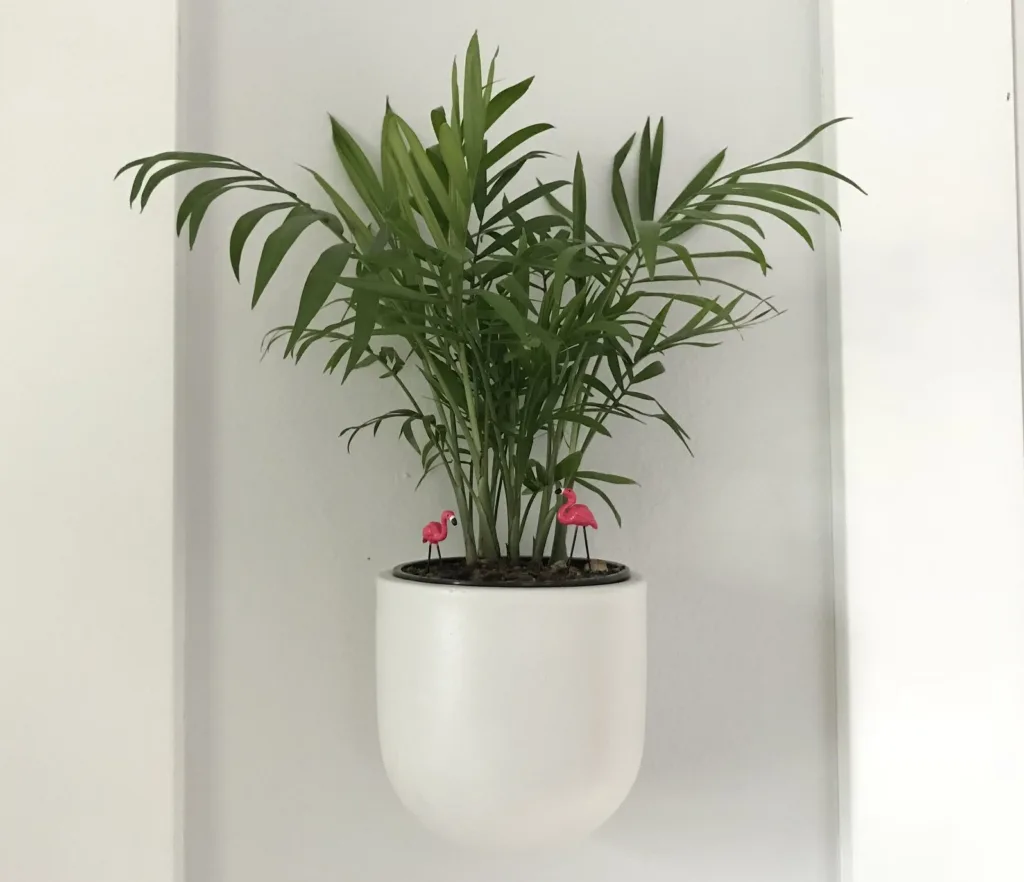The parlor palm, also known as Chamaedorea elegans, is a popular indoor plant that adds a touch of elegance and greenery to any space.
With its delicate fronds and compact size, the parlor palm is a favorite among plant lovers and beginners alike.
But how do you ensure that your parlor palm thrives and stays healthy? In this comprehensive guide, we will explore the essential aspects of growing and caring for a parlor palm, from choosing the right potting mix to providing the ideal growing conditions.
| Characteristic | Details |
|---|---|
| Botanical Name | Chamaedorea elegans |
| Common Name | Parlor Palm, Neanthe Bella Palm, Good Luck Palm |
| Family | Arecaceae (Palm family) |
| Plant Type | Evergreen, Palm |
| Native Region | Rainforests of Southern Mexico and Guatemala |
| Mature Height | Typically 2 to 6 feet (0.6 to 1.8 meters) |
| Growth Rate | Slow |
| Light Requirements | Indirect, filtered light; can tolerate shade |
| Watering Needs | Moderate; keep soil consistently moist |
| Soil Type | Well-draining potting mix |
| Temperature Tolerance | Prefers warm temperatures, avoids drafts |
| Humidity Requirements | Enjoys higher humidity levels, mist occasionally |
| Fertilization | Feed with a balanced liquid fertilizer monthly |
| Common Uses | Indoor ornamental plant |
| Toxicity | Non-toxic to humans and pets |

What is Parlor Palm
The Parlor Palm (Chamaedorea elegans) is a popular choice for both indoor and outdoor decor, adding a touch of elegance and tropical charm to your living spaces.
Indoor Decor:
Air Purification: Parlor Palms are known for their air-purifying qualities, helping to filter out common indoor pollutants. They contribute to creating a healthier indoor environment.
Aesthetic Appeal: With its graceful, arching fronds, the Parlor Palm brings a lush and tropical feel to interiors. It complements a variety of interior styles, from traditional to modern.
Adaptability: Parlor Palms are adaptable to low-light conditions, making them suitable for spaces with limited natural light. They thrive as understory plants, making them ideal for placement in corners or as a backdrop.
Low Maintenance: This palm is relatively low-maintenance, requiring moderate watering and tolerating a range of humidity levels. It’s a great choice for those who want a visually appealing plant without extensive care.
Outdoor Decor:
Landscaping: In regions with a mild climate, Parlor Palms can be used in outdoor landscaping to create a tropical oasis. They work well in shaded or partially shaded areas.
Container Gardening: Parlor Palms are well-suited for container gardening on patios, decks, or balconies. Placing them in decorative pots can enhance the overall aesthetics of outdoor spaces.
Poolside Accent: The tropical appearance of Parlor Palms makes them a perfect choice for poolside areas. They add a touch of greenery without shedding excessive leaves.
Understory Planting: In garden beds with taller trees or shrubs, Parlor Palms can be planted as understory plants, providing a lush, layered look.
Choosing the Right Potting Mix for Parlor Palm
The first step in caring for a parlor palm is selecting the right potting mix. A well-draining mix is crucial for the overall health of the plant.
A combination of peat moss, perlite, and vermiculite works well for parlor palms. This mix provides adequate moisture retention while allowing excess water to drain freely.
Avoid using heavy soils or those that tend to retain too much moisture, as this can lead to root rot.
Ideal Location of Parlor Palm
Parlor palms thrive in bright, indirect light. While they can tolerate low light conditions, they will grow best in locations with bright, filtered light.
Placing your parlor palm near a north-facing window or a few feet away from an east- or west-facing window is ideal.
If you notice the fronds turning yellow or pale, it may be an indication that the plant is receiving too much direct sunlight.
Watering the Parlor Palm
Proper watering is essential for the health of your parlor palm. The frequency of watering will depend on various factors, including the size of the pot, the surrounding temperature, and the humidity levels.
As a general rule, water the plant thoroughly once the top inch of the potting mix feels dry to the touch. Overwatering can lead to root rot, while underwatering can cause the fronds to turn brown and brittle.
Humidity Requirements for Parlor Palm
Native to the rainforests of Mexico and Guatemala, parlor palms thrive in humid environments. To mimic their natural habitat, it is essential to provide additional humidity.
This can be achieved by placing a tray of water near the plant or using a humidifier. Misting the fronds regularly also helps in maintaining optimal humidity levels.
Avoid placing the parlor palm near drafts or heating vents, as these can decrease humidity levels and cause stress to the plant.

Fertilizing the Parlor Palm
While parlor palms are not heavy feeders, providing them with the right nutrients is crucial for their overall health and growth.
Use a balanced, water-soluble fertilizer formulated specifically for indoor plants. During the growing season, which typically spans from spring to early fall, fertilize the plant once a month.
Follow the instructions on the fertilizer package and dilute it to half the recommended strength to avoid overfeeding.
Regular Pruning and Maintenance
Regular maintenance and pruning are necessary for keeping your parlor palm looking its best. Remove yellow or brown fronds as they appear, using clean and sharp pruning shears.
This helps in maintaining the overall aesthetic appeal of the plant and prevents the spread of any potential diseases.
Additionally, check the plant regularly for pests such as spider mites or mealybugs. If necessary, treat the infestation promptly with an organic insecticidal soap or neem oil.
Repotting the Parlor Palm
As your parlor palm grows, it will eventually outgrow its pot and require repotting. This usually occurs every two to three years.
Signs that your parlor palm needs repotting include roots growing out of the drainage holes, a lack of growth, or the pot becoming top-heavy.
When repotting, choose a pot that is one size larger and use fresh potting mix. Be gentle when handling the roots and avoid disturbing them too much to prevent unnecessary stress to the plant.
Troubleshooting Common Issues
Even with proper care, parlor palms may encounter certain problems. Here are some common issues and their solutions:
- Fronds turning yellow: This can be a sign of overwatering. Adjust your watering schedule and ensure the soil is well-draining.
- Fronds turning brown and crispy: Insufficient watering or low humidity levels can cause the fronds to dry out. Increase the frequency of watering and provide additional humidity.
- Leaf spots: Leaf spots can be caused by bacterial or fungal infections. Prune affected leaves and make sure the plant is not overcrowded or exposed to excess humidity.
| Chamaedorea elegans: This is the classic Parlor Palm and the most widely cultivated. It has arching, green fronds, and a bushy, clumping habit. Bella Palm (Chamaedorea elegans ‘Bella’): This is a more compact cultivar of the Chamaedorea elegans with smaller fronds and a neat appearance. Compacta Palm (Chamaedorea elegans ‘Compacta’): Similar to the Bella Palm, the Compacta Palm is a more compact variety with smaller fronds, making it suitable for smaller spaces. Seifrizii Palm (Chamaedorea Seifrizii): While not the same species, the Seifrizii Palm is often referred to as the Bamboo Palm and is closely related to the Parlor Palm. It has a slender appearance with feathery, bamboo-like fronds. Metallica Palm (Chamaedorea metallica): This variety is known for its metallic, bluish-green fronds, providing a unique and attractive appearance. |

Conclusion
Growing and caring for a parlor palm is a rewarding experience that can bring beauty and tranquility to any indoor setting.
By providing the right potting mix, optimal lighting conditions, proper watering, and regular maintenance, you can ensure that your parlor palm thrives and remains healthy for years to come.
Remember, each plant is unique, so pay attention to its individual needs and adjust your care routine accordingly.
With patience, love, and a little bit of green-thumb magic, your parlor palm will flourish and become a stunning addition to your home.
FAQs
Does parlor palm need sunlight?
Sunlight Requirements: Parlor Palms prefer indirect, bright light but can tolerate lower light conditions. They are adaptable to various light levels, making them suitable for indoor spaces with limited sunlight.
Are parlor palms good indoor plants?
Indoor Suitability: Yes, Parlor Palms are excellent indoor plants. Their low light requirements and air-purifying capabilities make them popular choices for homes and offices.
are parlor palms toxic to cats?
Toxicity to Cats: Parlor Palms are considered non-toxic to cats. While ingestion may not cause severe harm, it’s always best to monitor pets around plants and consult with a veterinarian if you have concerns.

